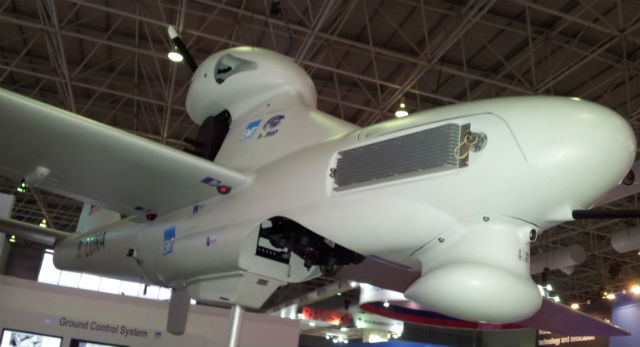Tactical unmanned air vehicles are a key focus at this year's Langkawi International Maritime & Aerospace (LIMA) exhibition, being held from 26-30 March.
German manufacturer EMT is promoting three models at the show: its catapult-launched Luna and Luna NG (below), and the hand-launched Aladin.
 |
|---|
Greg Waldron/Flightglobal |
International sales director Horst Bauch says Malaysia is still in the process of defining its tactical UAV needs, but that there are potential requirements from the nation's navy, coastguard and police.
"The countries in the region are concerned about borders and coastlines," Bauch says. He lists a number of problems that the region's governments would seek to deal with through the heightened use of UAVs, including piracy, illegal fishing, and drug and human trafficking.
EMT, which employs about 180 staff, has sold UAVs to the German army, as well as Middle Eastern customers. It has yet to win a sale in Malaysia, but has already established a local unit, DST UAV Systems & Services, to market its products.
Cassidian is promoting the catapult-launched DVF 2000 mini-UAV, developed by France's Survey Copter, for a range of land and maritime applications.
Other UAV makers such as Boeing Insitu, Cassidian, Saab and Schiebel also displayed mock-ups of tactical UAVs at the LIMA show.
The current market leader in Malaysia is arguably Boeing unit Insitu, which in 2012 leased an unspecified number of ScanEagle UAVs to Composites Technology Research Malaysia (CTRM), for use by the Malaysian armed forces.
Insitu declined to discuss its relationship with CTRM, but industry sources familiar with Malaysian defence requirements say the ScanEagle may have been deployed in support of efforts to oust a group of Filipino intruders who recently infiltrated Malaysia's eastern state of Sabah.
Malaysia's navy also has a requirement for a vertical-lift UAV to operate from its warships. Scheibel promoted its Camcopter UAV and Saab its Skeldar at the show.
Although tactical UAV systems were prominent at this year's LIMA, there was no evidence of medium-altitude, long-endurance or high-altitude, long-endurance systems being promoted.
Source: Flight International
















